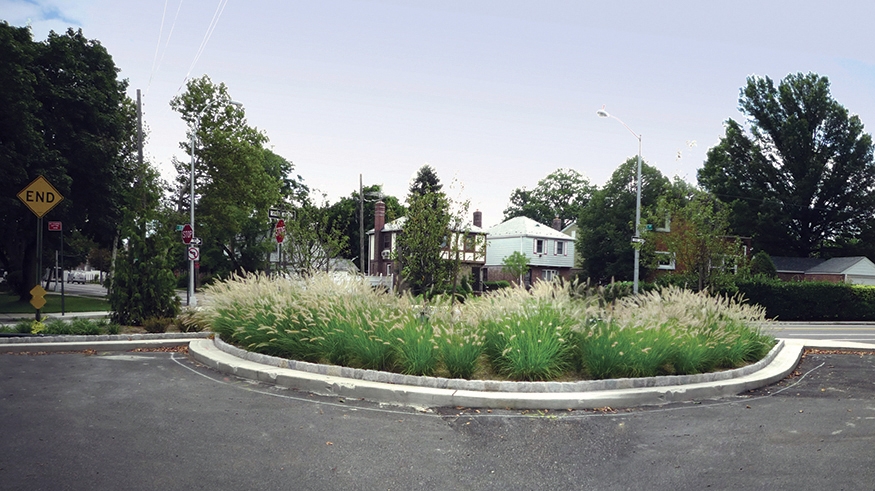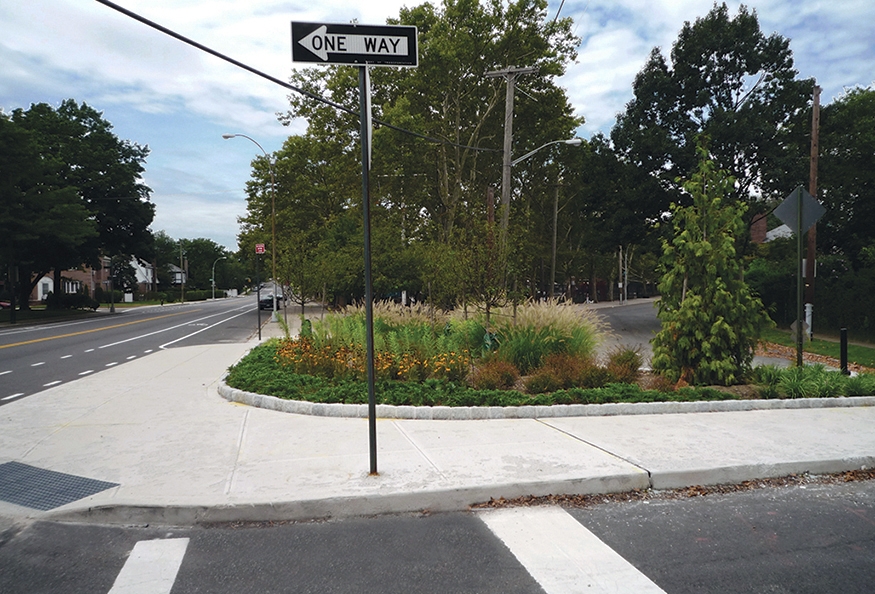The public space at the end of a street abutting a boardwalk or body of water. Pedestrian access to the water, boardwalk, or waterfront promenade must be maintained. In some cases, street ends are adjacent to waterfront public access areas where the city has required private development to build and maintain a waterfront promenade. These public access areas are generally created through the zoning resolution that regulate how the space is designed and maintained. PDC review is typically required for changes within the Street End and should be conducted in concert with DCP’s review of a waterfront public access area, if applicable.


Benefits
See Benefits of Plantings in the ROW in the Introduction
- Provides an opportunity to actively collect and manage stormwater
Considerations
See considerations for Triangle
- Consider maintaining clear view corridors to visual resources (i.e. bodies of water) from upland sidewalks
- Physical and environmental stresses should be understood prior to plant selection; especially if near the coast or another body of water
- Plantings not maintained by the city require a maintenance agreement with DOT
- Certain Street Ends are subject to the DOT-Parks Street Ends MOU; these are typically built as part of a Waterfront Access Plan
Design
- Consult DCP for Waterfront Public Access requirements for adjacent parcels and to allow for coordination with existing or future public access areas and continuous access along the shoreline where appropriate
- A minimum 5-foot path for pedestrian access should be provided through a planted area if there is an accessible area beyond the plantings; a larger clear path, up to 15 feet, may be required if there are high pedestrian volumes
- Consider the use of pedestrian amenities, such as street furniture, in conjunction with plantings. Non-standard elements will require a maintenance agreement
- Consider the capture of stormwater runoff. See Stormwater Management Practices
- Consider the use of a barrier, such as a W-section guide rail or martello bollard, to prevent vehicular access and damage to plantings; all barriers must be reviewed and approved by DOT and any non-standard barriers will require a maintenance agreement
Plants
See Plant Finder

